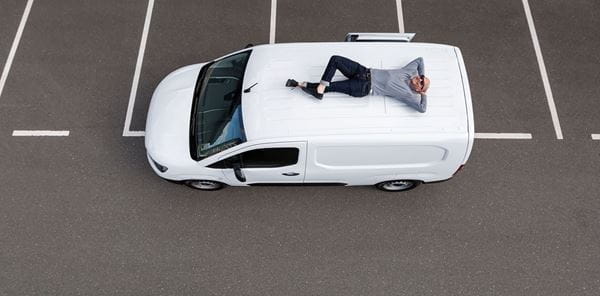
Total cost of ownership: How electric vehicles and ICE vehicles compare
Electric vehicles (EVs) are becoming more and more popular. No longer limited to tech-savvy early adopters, they are capturing the attention of a far wider audience and rapidly changing the face of the overall automotive landscape.
Total cost of ownership: How electric vehicles and ICE vehicles compare
Electric vehicles (EVs) are becoming more and more popular. No longer limited to tech-savvy early adopters, they are capturing the attention of a far wider audience and rapidly changing the face of the overall automotive landscape.
There are two main reasons for this: first, the introduction of many new EV models in recent years, and second, the growing affordability of electric driving. In fact, LeasePlan’s Car Cost Index 2021 shows that in many European countries, EVs are even cheaper to drive than traditional internal combustion engine (ICE) vehicles (*source CCI 2021).
But how much does it cost to drive an EV compared to a similar ICE model, and where exactly can the differences be seen? In this blog, we compare the total cost of ownership (TCO) between EVs and ICE vehicles.
TCO explained: Which cost elements are included?
For a like-for-like comparison, the same services need to be included in the TCO for both the ICE vehicle and the EV. A full operational lease contract includes a service package containing the following:
- Funding
- Taxes
- Maintenance
- Tyres (summer and winter, if applicable)
- Insurance(comprehensive)
- Energy Budget: Fuel or Electricity
The energy budget is a particularly important factor – and a cost differentiator, since electricity has a significantly lower cost level than fossil fuels. It is always a good idea to include fuel/electricity costs for a true, like-for-like TCO comparison.
As with fuel, the price of electricity differs depending on the location, but this regional variation can be greater for electricity than for fuel. Rapid charging along a motorway can be significantly more expensive than home charging, for instance. Therefore, based on our data, which shows our clients use a mix of 60% home charging, 30% workplace charging and 10% public charging, we apply the average price of three types of charging in our TCO calculations.
Beside the services included, the specific mileage and the term of the lease contract also need to be the same. For this analysis, we assume a contract duration of 48 months and an annual mileage of 30,000 km. This is a very common term-and-mileage combination, explained by a cost optimum of (decreasing) depreciation and (increasing) cost of maintenance.
Scope: Volkswagen Golf vs Volkswagen ID.3 in 22 countries
In order to draw a fair comparison between EVs and ICE vehicles, we need to compare similar models. For the purpose of this study, we compare the Volkswagen Golf (petrol and diesel) with the Volkswagen ID.3 (electric). The Volkswagen ID.3 can be considered the successor to the Volkswagen Golf Electric and is already widely available.
The vehicle leasing costs vary per country, influenced by factors such as the local taxation system, labour costs, fuel costs and EV government incentives. Demand also varies per country, with an impact both on the up-front price of the vehicle and on its value in the used-car market. In this study, we take the average leasing costs for the Golf and ID.3 in the following 22 European countries (can see at the end of the page).
EVs vs ICE vehicles: Comparing the individual cost elements
Taken as an overall figure, on average across the 22 countries in scope, the TCOs for the Volkswagen Golf and the Volkswagen ID.3 are similar. However, there are clear differences in the individual cost elements, as illustrated in the figure below. The cost elements of the Golf are set as the baseline, with the ID.3 cost elements compared against them. This method highlights the differences between EVs and ICE vehicles.
Pros
Cons
Comparison of the total cost of ownership (TCO) between EV and ICE
Impact of the increase in energy prices
In 2021, the price of electricity (EU/kWh) and the price of petrol (litres/kWh) rose. Naturally, an increase in this cost element of the TCO will result in an increase in the overall TCO. However, the effect of an energy price increase on an EV versus the same energy price increase on an ICE vehicle is different, since electricity costs are a smaller part of the TCO than fuel costs are. For the Volkswagen ID.3, energy accounts for 11% of the TCO while, for the Volkswagen Golf, energy accounts for 22% of the TCO. See the figure below for an illustration.
An increase in the price of electricity therefore has a different impact from an increase in the price of petrol/diesel. For example, when the price of both electricity and fuel increases by 50%, this results in a TCO increase of 6% for the Volkswagen ID.3, but a TCO increase of 11% for the Volkswagen Golf. This shows that the ID.3 is more resilient to energy price fluctuations than the Golf. In addition, an EV can be charged from renewable energy sources – so if you have solar panels on your roof and (partly) charge your car with electricity from those panels, you are even less affected by price fluctuations.
Conclusion
This comparison shows the TCO of a Volkswagen ID.3 is on average lower than that of a Volkswagen Golf. Clearly, from a cost perspective, EVs are a suitable alternative to ICE vehicles in car policies, and there are few reasons to avoid them. Most of the countries included in this study show scenarios in which an EV is the lower-cost option (see CCI 2021*).
We also see that, in general, a longer lease duration and higher mileage will produce greater cost advantages for the EV compared to the ICE vehicle, both because of the lower running costs (primarily road taxes and fuel) and because of the (higher) investment value that can be spread over a longer period.
The analysis also shows differences in the individual cost elements when comparing ICE vehicles to EVs. One of the most significant factors is fuel and electricity costs, which come out in favour of EVs and which should therefore always be included in a fair TCO comparison. Furthermore, not only are EVs are less sensitive to energy price fluctuations but they can also be charged (at least in part) by renewable energy sources.
Countries in study:
- Austria
- Belgium
- Czech republic
- Denmark
- Finland
- France
- Germany
- Ireland
- Italy
- Luxemburg
- Netherlands
- Norway
- Poland
- Portugal
- Romania
- Slovakia
- Spain
- Sweden
- Switzerland
- United Kingdom (UK)






